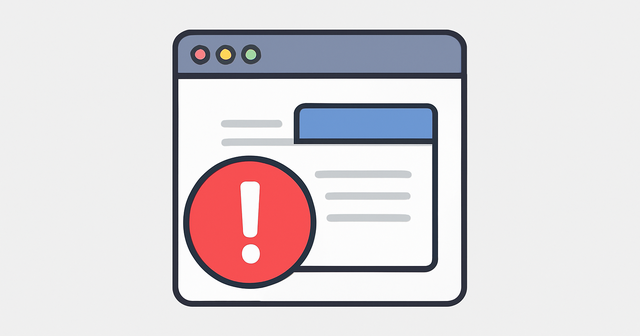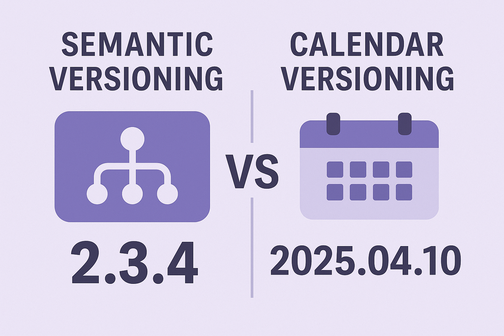Why Tests? Explained for Management

For business leaders: why testing matters for ROI, risk reduction, and agility explained in management language with numbers and real case studies.
In today’s digital economy, software quality is business quality. Yet many leaders still view testing as an optional cost something that slows delivery instead of accelerating it. The truth is the opposite: testing is a business enabler that reduces risk, saves money, and drives faster, more confident releases.
This article explains the why behind testing from a management perspective using hard data, real case studies, and metrics that matter.
The good news: Proven, modern testing solutions exist for every team size and budget. Tools like GitHub Actions, Selenium, Cypress, PHPUnit, and Playwright make it possible to automate quality reliably at scale without requiring deep technical knowledge from leadership.
The Business Drivers
1. Risk Reduction
Fixing a defect late in the process can cost up to 100x more than catching it early. A study by the Institute of Electrical and Electronics Engineers (IEEE) found that the cost to fix a bug increases exponentially the later it is found in the software lifecycle.
During development: ~$100–200 per defect
During testing: ~$1,000 per defect
In production: $10,000+ per defect
Testing reduces the risk of costly outages and service disruptions both financially and reputationally.
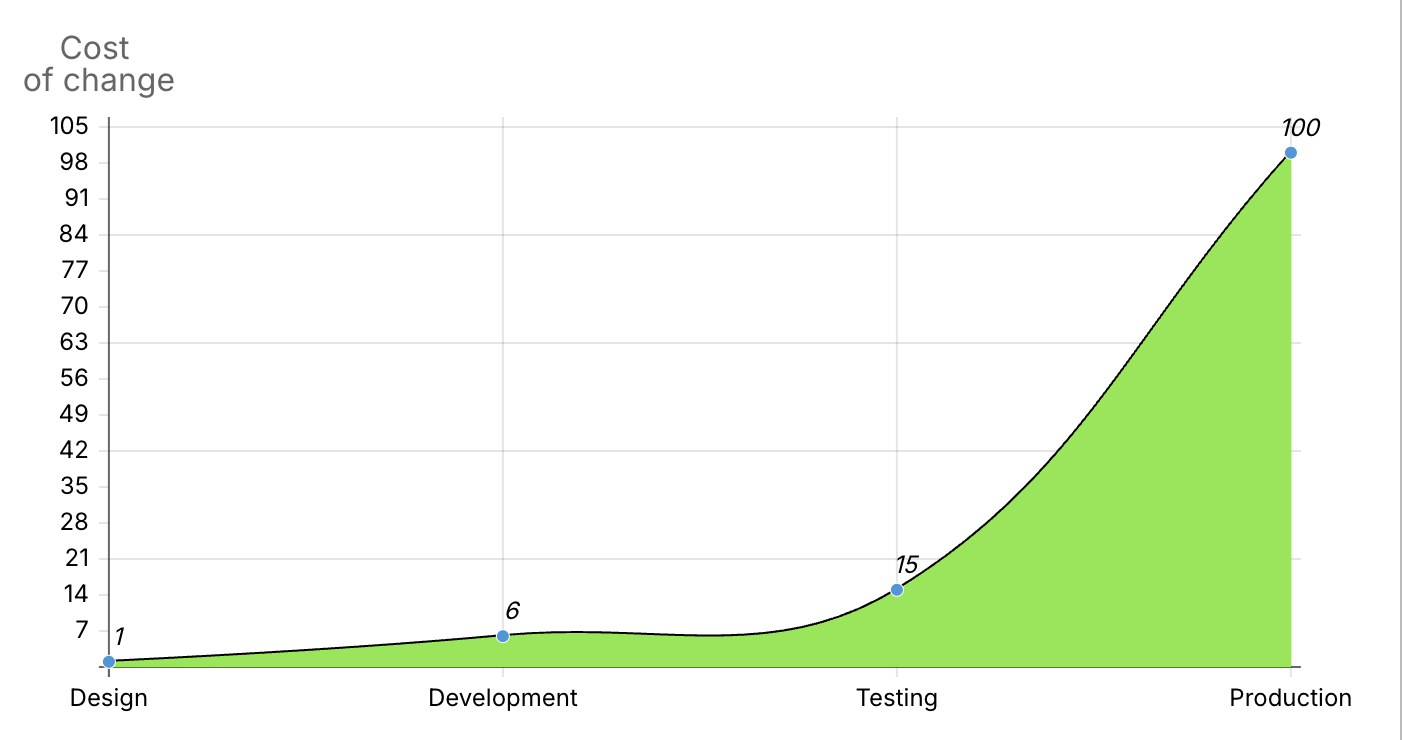 Defect Cost Curve - Classic IBM and NIST defect cost model (still cited in ISO/IEC 5055 and SEI studies).
Defect Cost Curve - Classic IBM and NIST defect cost model (still cited in ISO/IEC 5055 and SEI studies).
This chart illustrates one of the most fundamental truths in software development: the later a defect is found, the more expensive it becomes. During the design or development phase, fixing an issue is almost trivial it may take a few minutes or an hour. But once the same issue reaches testing, and especially production, the cost rises exponentially. At that point, the defect affects more components, more people, and often requires emergency work. That’s why testing and early validation are not “extra steps”; they are powerful cost-avoidance mechanisms.
2. Faster Time-to-Market
With robust test coverage and automation, teams can release with confidence. Continuous testing enables smaller, safer releases, meaning new features reach customers faster without waiting for manual QA bottlenecks.
Companies that invest in automation report 30–50% faster release cycles (TestRail/Forrester 2024).
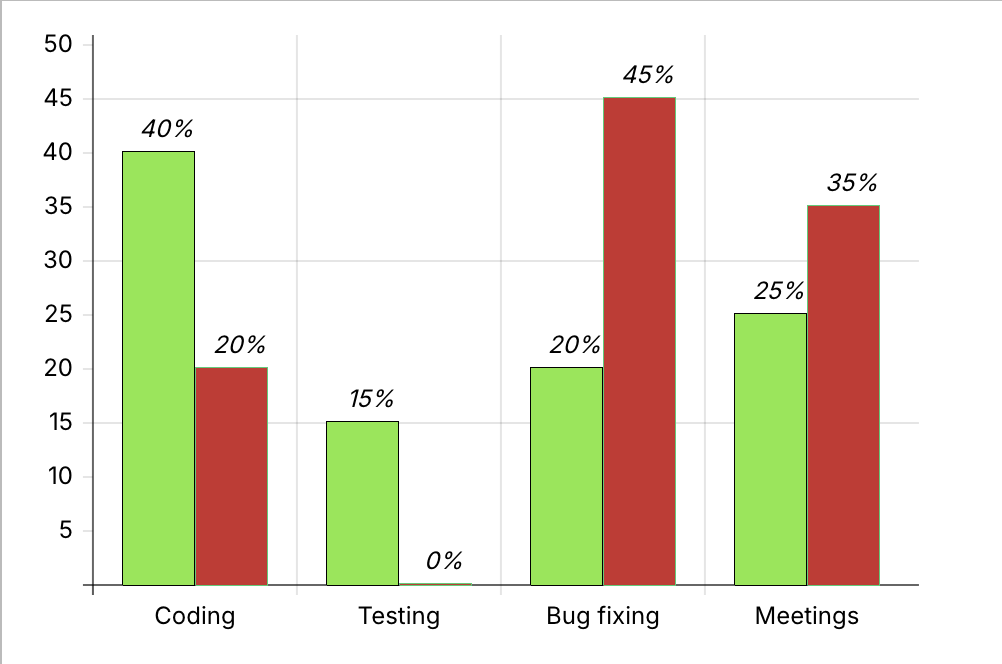 Developer Productivity Impact - Atlassian State of Developer Productivity (2022) & Stripe: Developer Coefficient (2018)
Developer Productivity Impact - Atlassian State of Developer Productivity (2022) & Stripe: Developer Coefficient (2018)
This comparison shows how testing directly influences how developers spend their time. In teams with strong test coverage and automation, the majority of time goes into productive work building features, improving the product, and running predictable testing cycles. In teams without sufficient tests, the opposite happens: a surprisingly large amount of time shifts into bug fixing, regressions, and unplanned meetings triggered by issues that slip through. The takeaway is simple: testing reduces firefighting and gives developers more time to move the business forward.
3. Cost Efficiency & ROI
Testing is not a cost center it’s a profit protector.
Forrester TEI Report (TestRail, 2024) → 204% ROI over 3 years; 14-month payback
Tricentis Case Study → 100% ROI in one year; 90% reduction in manual testing
Parasoft (Caesars Entertainment) → $1M cost avoidance through automation
IT Convergence Report → 30% testing cost reduction with automation
When you automate repetitive tests and standardize processes, your testing costs go down, while quality and release speed go up.
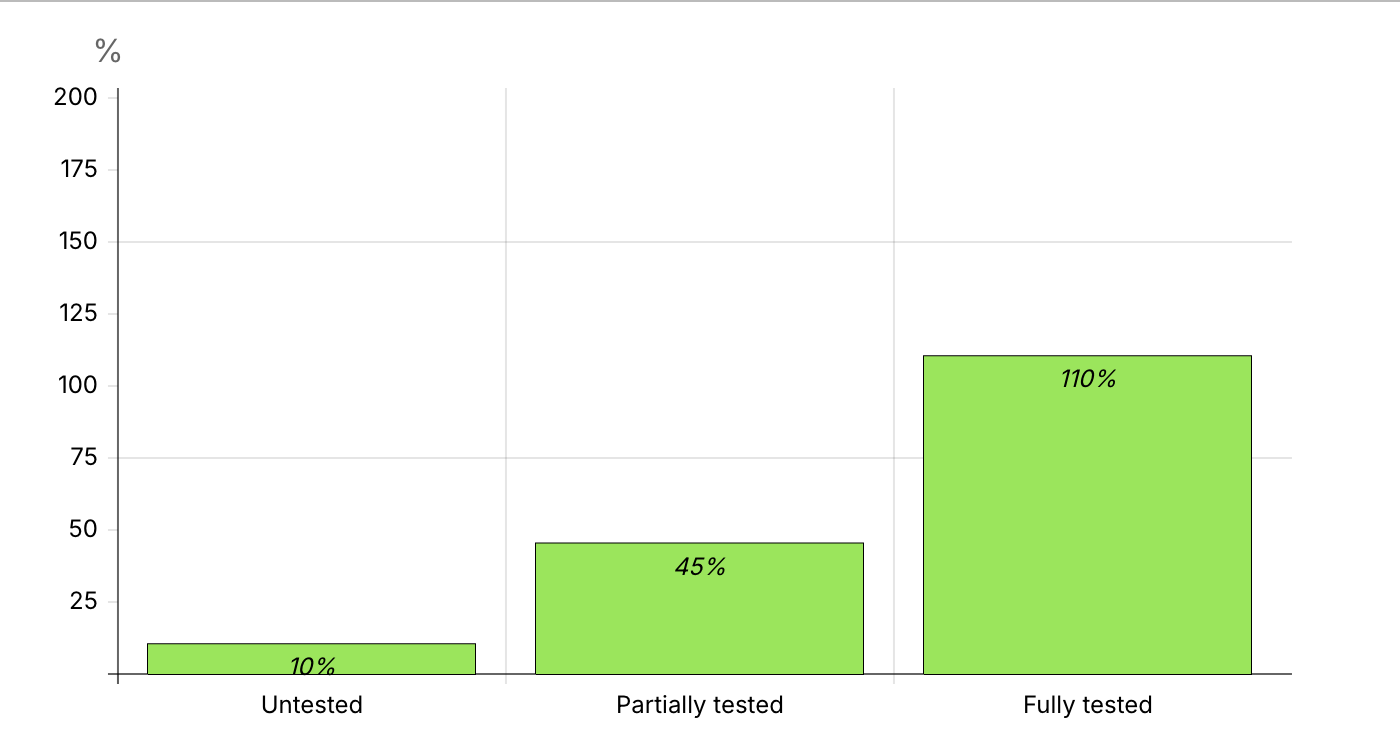 ROI Comparison: Tested vs. Untested Projects - NIST 2020: The Cost of Poor Software Quality in the U.S.
ROI Comparison: Tested vs. Untested Projects - NIST 2020: The Cost of Poor Software Quality in the U.S.
This chart demonstrates how testing translates into financial return. Projects with little or no test coverage generate limited ROI because teams continuously lose time and money resolving avoidable issues. As coverage increases, the ROI grows significantly: defects are caught earlier, releases become more stable, and support costs drop. Fully tested systems, especially those supported by automation can even exceed 100% ROI because they enable fast, confident delivery while dramatically reducing the cost of poor quality. In other words, testing pays for itself, often faster than expected.
Real Case Studies
Case Study 1: Caesars Entertainment
Challenge: Multiple applications, legacy systems, and frequent regressions increased release risk.
Action: The team automated >96% of UI tests and 97% of API tests using Parasoft tools.
Outcome: Over 20,000 manual hours saved, translating to more than $1 million cost avoidance in one year.
Automation gave us measurable savings and confidence in every release.
— QA Manager, Caesars Entertainment (Parasoft Case Study)
Case Study 2: Global FMCG Company
Challenge: Long manual regression cycles delaying releases.
Action: Adopted Tricentis Tosca for automation.
Outcome: Full ROI within 12 months, 90% reduction in manual testing, and 80% reuse of automated scripts.
Case Study 3: SaaS Company Scaling Releases
Challenge: Manual testing couldn’t keep up with weekly deployments.
Action: Introduced automated end-to-end tests using Symfony Panther and GitHub Actions.
Outcome: Reduced release validation time from 2 days to 2 hours, while maintaining 99.9% uptime.
This shows that even smaller teams can achieve enterprise-level efficiency with the right testing approach.
How to Convince Your Boss (or Your Leadership Team)
Testing is not about perfection, it’s about predictability, efficiency, and resilience.
Key Management Takeaways:
Make testing visible → Link testing outcomes to business metrics (e.g., fewer support tickets = lower operational cost).
Invest early (Shift Left) → Detecting defects during development saves exponential costs later.
Automate smartly → Focus on repetitive, high-risk areas first for maximum ROI.
Report with metrics → Show tangible KPIs like defect escape rate, coverage, and release cycle time.
Frame testing as a value driver, not a blocker → emphasize cost avoidance and faster innovation.
Testing enables agility with confidence → the ability to move fast without breaking things.
The Hidden ROI Formula
Testing ROI can be expressed as:
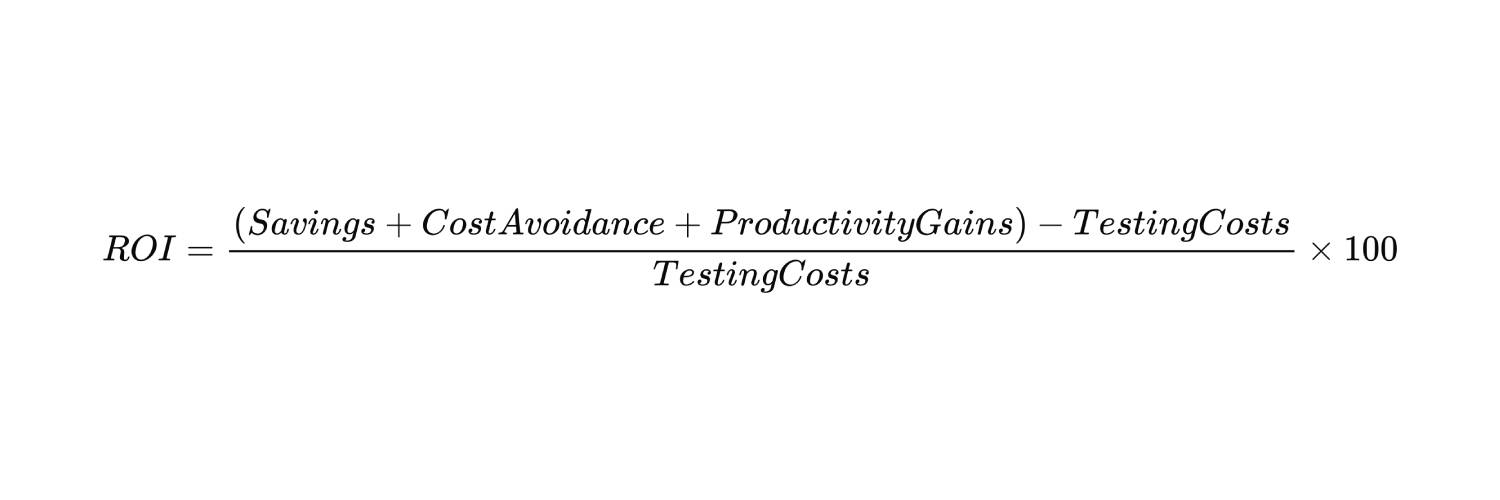
Even modest automation (30–40%) can lead to double-digit ROI within a year, especially for projects with frequent releases.
The Strategic Perspective
When testing becomes part of your strategy, not an afterthought, it empowers your teams to:
Deliver faster without fear of regressions
Reduce unplanned downtime
Strengthen customer trust
Focus on innovation, not firefighting
In a world where your brand lives through your software, testing is risk management and risk management is leadership.
Sources
IEEE – Cost of Software Defects (2023)
NIST: The Economic Impacts of Inadequate Infrastructure for Software Testing (2002)
Forrester Consulting: Total Economic Impact of TestRail (2024)
